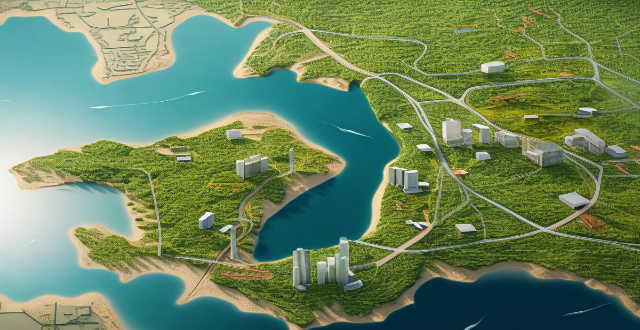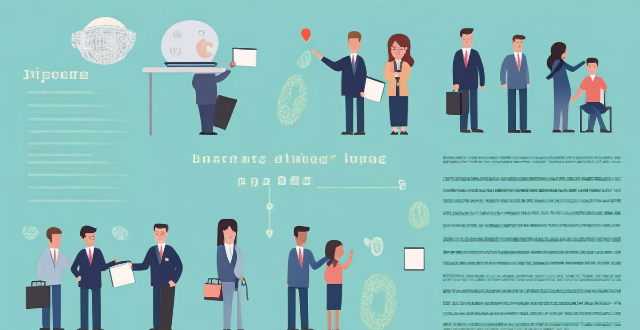Place Meet

How can I meet other travelers while backpacking ?
Backpacking is an incredible way to explore the world and experience different cultures. However, it can sometimes get lonely on the road. Here's how you can meet other travelers and make your journey more enjoyable: - **Stay in Hostels:** Hostels are a great place to meet fellow backpackers. They usually have communal areas where people gather to socialize. Some hostels also organize events like pub crawls or city tours which are perfect opportunities to meet new people. - **Join Tour Groups:** Signing up for a tour group is another excellent way to connect with other travelers. You'll share experiences and create bonds over common interests. Opting for adventure activities like hiking or diving will likely put you with like-minded individuals. - **Use Social Media and Apps:** The digital age has made it easier than ever to connect with people who share your passion for travel. Websites like Lonely Planet have forums where you can find travel companions or get advice. Apps such as Backpackr and Travello allow you to find travelers going to the same place as you and plan to meet up. - **Take Part in Local Activities:** Engaging in local activities is not only a great way to immerse yourself in the culture but also to meet other travelers interested in the same experiences. Learning a skill like cooking or dancing is a fun way to meet people. Volunteering for local projects can introduce you to a network of travelers and locals alike. - **Attend Local Festivals:** Local festivals draw crowds, including other travelers looking to experience the event. This setting is ideal for meeting new people. Music festivals often attract a young, international crowd. Participating in traditional festivals offers a deeper understanding of the culture and chances to meet travelers. - **Hang Out at Popular Landmarks:** Popular tourist spots are natural magnets for travelers. Spending time at these locations increases your chances of meeting others. Places like the Eiffel Tower or the Great Wall of China are bound to have other tourists. Head to popular viewpoints or scenic spots; they often attract photographers and adventurers. - **Eat at Local Restaurants:** Dining at local eateries during peak meal times increases your likelihood of encountering other travelers. Many backpackers look for a good breakfast place; you can start your day with new friends. Places that offer good value for money tend to attract backpackers. - **Learn the Local Language:** Having some knowledge of the local language can help you connect with both locals and other travelers trying to learn it. Look for language exchange meetups where you can teach English in exchange for learning the local language. Attending a language course is another way to meet people with similar interests.

How can I meet my favorite idol group after their concert ?
Attending a concert of your favorite idol group is an exhilarating experience. However, the excitement doesn't have to end when the show does. Here are some tips on how you can potentially meet your favorite idols after their performance: 1. Research About Meet and Greet Opportunities: Before buying a ticket, research if the concert organizers offer any official meet and greet packages or opportunities. These may include pre-show sound check participation, VIP packages, and post-show meet and greets. 2. Follow Official Social Media Accounts: Stay updated by following your idol group and the concert venue’s official social media accounts. They might announce last-minute events or changes that could provide opportunities to meet the artists. 3. Arrive Early at the Venue: Being among the first to arrive can sometimes lead to unexpected chances to interact with the idols. Artists often do interviews or photo shoots near the venue before the concert starts. 4. Join Fan Clubs and Forums: Being part of a dedicated fan club or online forum can give you access to insider information about meet and greet opportunities. Experienced fans might share tips on how to approach these situations or inform you about unofficial events where the idols are known to make appearances. 5. Be Prepared with Gifts or Letters: If you do get a chance to meet your idols, consider having a small gift or a heartfelt letter prepared. This can make a lasting impression and might increase your chances of a more personal interaction. Remember to respect their time and privacy. 6. Be Respectful and Patient: Should you find yourself in a position to meet your idols, remember to be respectful of their space and time. Patience is key; don’t rush or push, as this can spoil the experience for everyone involved. 7. Look Out for Unofficial Events: Sometimes, idol groups might visit local restaurants, shops, or attractions after their concerts. Keep an eye out for any hints dropped by the artists or their teams on social media. Being at the right place at the right time could lead to an impromptu meeting. 8. Hotel Lobbies and Exit Points: While it's not advisable to wait outside hotels or exit points with the intention of meeting idols (as it can invade their privacy), some fans have had luck with accidentally encountering their favorite groups in these areas. Always be respectful and keep a reasonable distance.

How can I meet new people through sports ?
How to Meet New People through Sports Meeting new people who share your passion for sports can be a fun and rewarding experience. Here are some ways to do it: 1. Join a sports club or league: This is one of the best ways to meet new people who share your interest in sports. There are many different types of clubs and leagues available, so you can find one that suits your skill level and interests. You can also participate in tournaments and events organized by the club, which will give you more opportunities to interact with other members. 2. Attend local sporting events: Attending local sporting events is another great way to meet new people who enjoy sports. You can go to games or matches of your favorite teams and strike up conversations with other fans. You can also volunteer at these events, which will allow you to meet people while contributing to the community. 3. Take up a new sport: Taking up a new sport is not only good for your physical health but can also help you meet new people. Joining a beginner's class or group lesson is a great way to learn a new sport while meeting others who are also learning. As you progress in your skills, you may have the opportunity to join more advanced groups or teams. 4. Participate in online sports communities: Online sports communities are a great way to connect with people from all over the world who share your passion for sports. You can join forums, chat rooms, or social media groups related to your favorite sports. Participating in online discussions and events can help you build relationships with other sports enthusiasts. 5. Host or attend watch parties: Hosting or attending watch parties for big games or tournaments is a fun way to meet new people who love sports as much as you do. Invite friends, family, and colleagues to watch the game together and encourage them to bring their own friends along. This can create a sense of camaraderie among everyone involved and lead to lasting friendships.

How will interstellar exploration impact our understanding of the universe and our place within it ?
Interstellar exploration is a quest to understand the universe and our place in it. It has the potential to revolutionize scientific knowledge by unraveling cosmic origins, understanding planetary systems, and advancing physics. It can also impact human perspective by realizing our place in the cosmos, cultural and philosophical implications, and ethical considerations. Interstellar exploration stands at the threshold of transforming our knowledge and perceptions, pushing the boundaries of science, and reshaping humanity's self-image.

What actions have countries taken to meet their climate commitments ?
Countries have made commitments to reduce their carbon emissions and mitigate the impacts of climate change. They have taken various actions, including investing in renewable energy sources, improving energy efficiency, implementing carbon pricing mechanisms, focusing on forestry and land use practices, and promoting international cooperation. These efforts demonstrate a collective determination to address the urgent issue of climate change and create a more sustainable future for all.

What international agreements are in place to combat greenhouse gas emissions ?
The text provides an overview of several international agreements aimed at combating greenhouse gas emissions, including the Paris Agreement, Kyoto Protocol, and United Nations Framework Convention on Climate Change (UNFCCC). The Paris Agreement, adopted by 197 countries in 2015, sets targets for reducing emissions and adapting to climate change impacts. The Kyoto Protocol, effective from 2005, introduced binding emissions reduction targets for developed countries. The UNFCCC, a treaty from 1992, established principles and mechanisms to address climate change. Additionally, there are regional and sectoral agreements targeting specific industries or regions.

What safety measures are in place on cruise ships ?
Cruise ships implement various safety measures to ensure the well-being of passengers and crew, including muster drills, life-saving equipment, fire safety systems, medical facilities, security personnel, emergency response plans, navigation systems, and regular maintenance checks.

Can developing countries meet the same climate commitments as developed ones ?
Climate change is a global challenge that requires collective action from all countries, regardless of their level of development. However, the question arises: can developing countries meet the same climate commitments as developed ones? This article discusses the differences in economic and technological capabilities, international support and collaboration, and national priorities and policy choices between developed and developing countries. While there are significant differences between the two groups of countries in terms of their ability to meet stringent climate commitments, international support and collaboration can help bridge these gaps. Additionally, national priorities and policy choices play a crucial role in determining whether developing countries can successfully implement climate actions while balancing other developmental goals.

What are the legal implications of failing to meet climate targets set by international agreements ?
Failing to meet climate targets set by international agreements can have significant legal implications, including liability for damages caused by climate change, violation of international law, and domestic legal consequences. These implications can vary depending on the specific agreement and jurisdiction in question, but some common consequences include public and private claims for damages, trade sanctions, loss of funding or aid, international dispute resolution, regulatory compliance, shareholder pressure, and reputational risk.

What are the most effective strategies for governments to meet climate goals ?
Governments around the world are facing the challenge of meeting climate goals, which is crucial for mitigating the impacts of climate change. To achieve these goals, governments must implement effective strategies that address various aspects of the issue. This article discusses some of the most effective strategies for governments to meet their climate goals.

What policies and regulations are currently in place to encourage more sustainable supply chain practices ?
Policies and Regulations Encouraging Sustainable Supply Chain Practices discusses various government initiatives, industry standards, and international agreements that promote sustainable supply chain practices. Government policies such as green procurement, carbon pricing, and eco-labels incentivize businesses to adopt environmentally friendly operations. Industry standards like CSR and LCA help companies understand and reduce their ecological footprint. International treaties like the Paris Agreement and Basel Convention provide a global framework for sustainable practices. Together, these measures form a comprehensive system to support sustainable supply chains worldwide.

What are the current climate policies in place to address global warming ?
The text discusses various current climate policies aimed at addressing global warming, including national and international agreements and corporate actions. National policies focus on renewable energy initiatives, carbon pricing mechanisms, energy efficiency standards, and deforestation reduction. International agreements like the Paris Agreement and Kyoto Protocol set targets for greenhouse gas emissions reductions. REDD+ provides financial incentives for reducing deforestation. Corporate actions involve CSR initiatives and carbon offsetting programs to minimize environmental impact.

What are the potential consequences of not having adequate biosafety policies in place ?
Biosafety policies are crucial for handling and containing biological materials safely. Inadequate biosafety measures can lead to direct and indirect exposure to pathogens, spread of disease, environmental contamination, legal and ethical issues, and economic impacts. It is vital for institutions and researchers to prioritize biosafety measures to protect human health, the environment, and society.

How can businesses adapt to changing climate conditions and still meet consumer demands ?
Businesses face the challenge of adapting to climate change while meeting consumer demands. Key strategies include embracing sustainable practices, innovating products and services, enhancing resilience, engaging stakeholders, and continuous learning and adaptation. By implementing these strategies, businesses can differentiate themselves as responsible corporate citizens while ensuring they continue to meet consumer demands.

How does the method of loci (memory palace) work scientifically ?
The method of loci, or memory palace technique, is a mnemonic device that enhances memory recall by associating information with specific locations in a familiar place. The scientific explanation behind its effectiveness involves visualization, spatial navigation, and association processes in the brain, particularly engaging the prefrontal cortex and hippocampus. Benefits include improved memory recall, enhanced learning, increased focus, and reduced anxiety. To use this method, one should choose a familiar place, create mental images, assign locations, perform mental walkthroughs, and regularly review and refine the process.

How can I protect my home from wildfires ?
Wildfires can cause significant damage to homes and properties, but there are steps you can take to protect your home. Create a defensible space by removing dead vegetation, trimming trees and shrubs, creating a firebreak, mowing grass regularly, and removing combustible materials. Use fire-resistant materials such as Class A roofing materials, stucco siding, dual-pane windows with tempered glass, and solid core doors made of metal or fiberglass. Maintain your home by cleaning gutters, inspecting roofs and chimneys, checking electrical wiring, and maintaining heating systems. Have an evacuation plan in place by identifying escape routes, having a meeting place, packing emergency kits, and practicing evacuation drills.

In what ways do women contribute uniquely to leadership roles in the workplace ?
Women's contributions to leadership roles in the workplace include empathy, emotional intelligence, inclusivity, collaborative leadership, adaptability, communication skills, and innovative thinking. These qualities can lead to more compassionate and diverse work environments, effective decision-making, and creative problem-solving.

How can seniors who are new to an area use local sports clubs as a way to meet people and build friendships ?
Moving to a new area can be challenging, especially for seniors leaving behind long-standing friendships. Joining local sports clubs is an excellent way to meet people and build new friendships. Here's a step-by-step guide on how seniors can use sports clubs for social connection: 1. **Research Available Clubs**: Start by finding out which sports clubs are available through online searches, local newspapers, community bulletin boards, or by asking neighbors. Look for sports that suit individual interests and physical abilities, such as golf, bowling, swimming, Tai Chi, walking clubs, or dance classes. 2. **Attend Open Days or Trial Sessions**: Many clubs offer open days or free trial sessions, allowing seniors to experience the club atmosphere, meet current members, and try out the sport without commitment. 3. **Join Regular Activities**: Once a suitable club and sport have been identified, becoming a regular member is crucial. This involves signing up for membership, attending scheduled activities consistently, and participating in club events and social gatherings. 4. **Engage Socially Within the Club**: To build friendships within the club, introduce yourself to other members, show interest in their experiences, invite them for coffee or meals after activities, and join or organize social events outside of sporting activities. 5. **Volunteer or Help with Club Activities**: Active involvement in the club's functioning can deepen connections. Offer to help with organizational tasks, volunteer for events, and share skills or expertise with the group, such as coaching or officiating. 6. **Stay Open and Positive**: A positive attitude is key in building new friendships. Be open to meeting people from diverse backgrounds, maintain a friendly demeanor, and embrace new experiences while enjoying the journey. By following these steps, seniors can use local sports clubs as a platform to engage in physical activities and forge new friendships, becoming an integral part of their new community.

How do climate disasters affect the psychological resilience of affected populations, and what support systems can be put in place ?
Climate disasters, such as hurricanes, floods, wildfires, and droughts, can have a profound impact on the psychological resilience of affected populations. Psychological resilience refers to the ability to cope with adversity, adapt to change, and bounce back from difficult situations. When faced with climate disasters, individuals and communities may experience stress, anxiety, depression, and post-traumatic stress disorder (PTSD). Effects of Climate Disasters on Psychological Resilience: - Loss of Property and Livelihoods: Climate disasters often result in the loss of homes, businesses, and livelihoods. This can lead to financial instability, which is a significant source of stress and anxiety for many people. - Displacement and Uprooting: In severe cases, climate disasters can force people to relocate or evacuate their homes temporarily or permanently. This displacement can disrupt social networks and support systems, leading to feelings of isolation and despair. - Trauma and Grief: Witnessing or experiencing injury, loss of life, or damage to property can cause traumatic reactions. Grief over lost loved ones or familiar surroundings can also affect mental health. - Uncertainty and Fear: The unpredictable nature of climate disasters can create ongoing uncertainty about future events, leading to chronic stress and fear about potential threats. - Health Concerns: Exposure to extreme weather conditions or contaminated water sources can raise concerns about physical health, adding another layer of stress. Support Systems for Enhancing Psychological Resilience: To help affected populations cope with the psychological impacts of climate disasters, various support systems can be put in place: Community-Based Support: - Counseling Services: Providing access to mental health professionals who can offer counseling services to those affected by climate disasters. - Support Groups: Creating peer support groups where individuals can share their experiences and provide mutual support. - Community Events: Organizing community events that promote social interaction and foster a sense of belonging within the community. Government Interventions: - Financial Aid: Providing financial assistance to help individuals and families rebuild their lives and recover from economic losses. - Housing Solutions: Ensuring adequate temporary housing while reconstruction takes place and investing in more resilient infrastructure to minimize future risks. - Educational Programs: Implementing educational programs that teach coping strategies and preparedness for future climate events. Non-Governmental Organizations (NGOs): - Emergency Relief: Providing immediate relief efforts such as food, water, and medical supplies to affected areas. - Rehabilitation Projects: Undertaking rehabilitation projects that focus on restoring livelihoods and rebuilding communities. - Awareness Campaigns: Conducting awareness campaigns to educate the public about the psychological effects of climate disasters and available resources for support. International Cooperation: - Global Funding: Securing global funding for countries heavily impacted by climate disasters to support recovery efforts. - Research Collaboration: Engaging in international research collaborations to study the long-term psychological effects of climate disasters and develop best practices for intervention. - Capacity Building: Working with developing nations to build capacity for mental health services and disaster response.